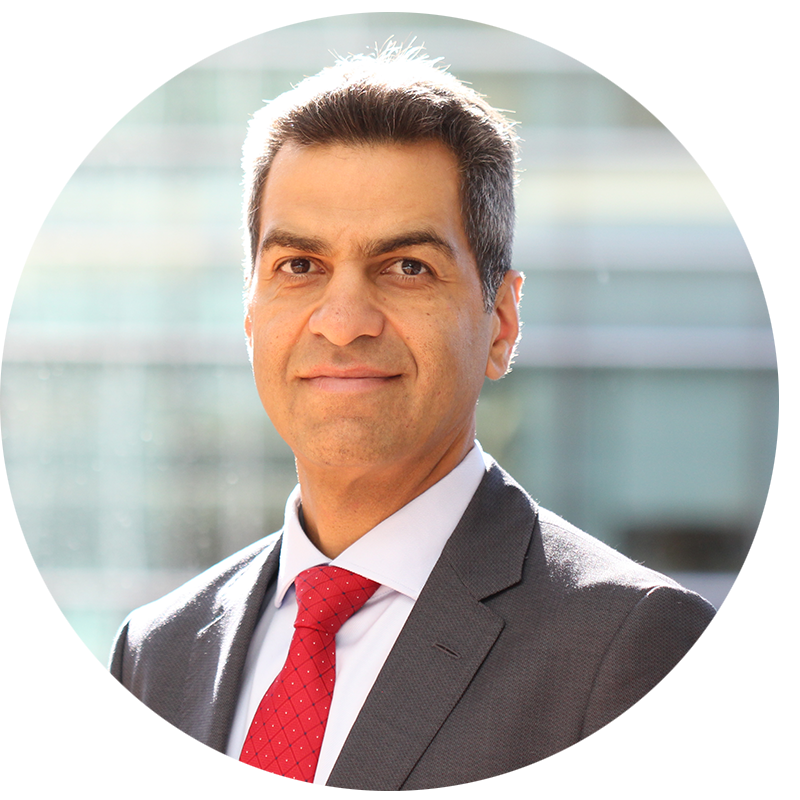From startups to legacy brands, you're making your mark. We're here to help.
-
Innovation Economy
Fueling the success of early-stage startups, venture-backed and high-growth companies.
-
Midsize Businesses
Keep your company growing with custom banking solutions for middle market businesses and specialized industries.
-
Large Corporations
Innovative banking solutions tailored to corporations and specialized industries.
-
Commercial Real Estate
Capitalize on opportunities and prepare for challenges throughout the real estate cycle.
-
Impact Banking & Advisory
When our communities succeed, we all succeed. Local businesses, organizations and community institutions need capital, expertise and connections to thrive.
-
International Banking
Power your business' global growth and operations at every stage.
Key Links
Prepare for future growth with customized loan services, succession planning and capital for business equipment.
-
Asset Based Lending
Enhance your liquidity and gain the flexibility to capitalize on growth opportunities.
-
Equipment Financing
Maximize working capital with flexible equipment and technology financing.
-
Trade & Working Capital
Experience our market-leading supply chain finance solutions that help buyers and suppliers meet their working capital, risk mitigation and cash flow objectives.
-
Syndicated Financing
Leverage customized loan syndication services from a dedicated resource.
-
Commercial Real Estate
Capitalize on opportunities and prepare for challenges throughout the real estate cycle.
-
Employee Stock Ownership Plans
Plan for your business’s future—and your employees’ futures too—with objective advice and financing.
Key Links
Serving the world's largest corporate clients and institutional investors, we support the entire investment cycle with market-leading research, analytics, execution and investor services.
-
Institutional Investors
Putting your long-tenured investment teams on the line to earn the trust of institutional investors.
-
Markets
Direct access to market leading liquidity harnessed through world-class research, tools, data and analytics.
-
Prime Services
Helping hedge funds, asset managers and institutional investors meet the demands of a rapidly evolving market.
-
Global Research
Leveraging cutting-edge technology and innovative tools to bring clients industry-leading analysis and investment advice.
-
Securities Services Solutions
Helping institutional investors, traditional and alternative asset and fund managers, broker dealers and equity issuers meet the demands of changing markets.
Key Links
Providing investment banking solutions, including mergers and acquisitions, capital raising and risk management, for a broad range of corporations, institutions and governments.
-
Center for Carbon Transition
J.P. Morgan’s center of excellence that provides clients the data and firmwide expertise needed to navigate the challenges of transitioning to a low-carbon future.
-
Corporate Finance Advisory
Corporate Finance Advisory (“CFA”) is a global, multi-disciplinary solutions team specializing in structured M&A and capital markets. Learn more.
-
Development Finance Institution
Financing opportunities with anticipated development impact in emerging economies.
-
Sustainable Solutions
Offering ESG-related advisory and coordinating the firm's EMEA coverage of clients in emerging green economy sectors.
-
Mergers and Acquisitions
Bespoke M&A solutions on a global scale.
-
Capital Markets
Holistic coverage across capital markets.
Your partner for commerce, receivables, cross-currency, working capital, blockchain, liquidity and more.
Key Links
A uniquely elevated private banking experience shaped around you.
-
Banking
We have extensive personal and business banking resources that are fine-tuned to your specific needs.
-
Investing
We deliver tailored investing guidance and access to unique investment opportunities from world-class specialists.
-
Lending
We take a strategic approach to lending, working with you to craft the right financing solutions matched to your goals.
-
Planning
No matter where you are in your life, or how complex your needs might be, we’re ready to provide a tailored approach to helping your reach your goals.
Whether you want to invest on your own or work with an advisor to design a personalized investment strategy, we have opportunities for every investor.
-
Invest on your own
Unlimited $0 commission-free online stock, ETF and options trades with access to powerful tools to research, trade and manage your investments.
-
Work with our advisors
When you work with our advisors, you'll get a personalized financial strategy and investment portfolio built around your unique goals-backed by our industry-leading expertise.
-
Expertise for Substantial Wealth
Our Wealth Advisors & Wealth Partners leverage their experience and robust firm resources to deliver highly-personalized, comprehensive solutions across Banking, Lending, Investing, and Wealth Planning.
Explore a variety of insights.
Key Links
Insights by Topic
Explore a variety of insights organized by different topics.
Key Links
Insights by Type
Explore a variety of insights organized by different types of content and media.
Key Links
We aim to be the most respected financial services firm in the world, serving corporations and individuals in more than 100 countries.
Key Links
- Insights
- Treasury
- Cash Forecasting & Planning
- How real-time treasury drives corporate loyalty
Hosted By Shahrokh Moinian

KAREN: Hi Shahrokh, it's Karen Webster and thank you so much for being a part of the podcast today. This is a series we're kicking off on the digital transformation of treasury drilling into this time, how treasury is becoming a strategic asset. So thanks so much for making the time.
SHAHROKH: Of course, it's a pleasure to be here and thanks for the opportunity.
KAREN: So, let's start with the basics. Maybe an obvious question, but this conversation is about making treasury a strategic asset to the business. Sort of a broad statement and maybe it implies a little bit to the cynic in me, maybe it's not already a strategic asset to the business, which I would imagine if you're the treasurer and you're the person looking after the cash that a company has and managing those cash flows and all of the liquidity and issues that surround it, what is it that we need to do, that you are doing, to make treasury more of a strategic asset to the business if it isn't already?
SHAHROKH: Well look, this topic of treasury becoming more strategic and one which we've been talking about for about 10 years or so since the financial crisis and the reality is that it has become a much more strategic function. We see Treasury's involvement much more today than in the past, in working capital discussions and strategic decisions in cybersecurity and [inaudible 00:01:36] money laundering discussions and decisions because they're going into in house banking and centralized treasuries and they have certain responsibilities into the strategic funding of the company as well as just driving the digital agenda of the company. Which are all very, very important topics, which they might not have done, let's say, 15 years ago. But this also means that they have a lot more on their plate to deal with and they are expected on all of these topics via of course on the [inaudible 00:02:07] at the same time to manage day to day treasury.
SHAHROKH: So day to day treasury these days is effected by Geopolitical uncertainty as you know. Currency movements as a result of trade wars, geopolitical movements which are changing basically the trade routes. And all of this again, are expected of them with less resources. So they're expected to do more with less because one of the trends that we see in treasury is to become leaner and meaner and more efficient in resources while having more topics to deal with alongside the perennial topics of cash visibility, cash flow forecasting, liquidity optimization, et cetera.
SHAHROKH: And the fact is that in today's or yesterday's world, the infrastructure available to a treasurer to make [inaudible 00:03:04] into new areas is going to be very difficult for them to do and to focus on all these new and old topics at the same time, which means that there is an impact on us as a banking community because the treasurers today are expecting much more from us in terms of helping them automate, helping them become more digital in their financial and the transaction banking environment, through realtime information, through interfacing by API, and basically helping them become real time treasury and [inaudible 00:03:46]
SHAHROKH: Whereas in the past, this could have been nice to have as a service. Now it's really an expectation and must have in our discussions with treasurers of large multinationals.
KAREN: So it sounds to me as though making treasury a strategic asset to the business requires that bankers think differently about how they can assist treasurers to do that, particularly with these leaner, meaner infrastructures that they're working with.
SHAHROKH: Absolutely, and I think a part of the banker's role today is one of explaining to treasurers what is going on in the market in terms of regulatory change, technology change and what that means for them in terms of value proposition and again, automation digitization, and secondly, trying to work out solutions which are user friendly and take the client experience into mind in terms of helping treasury through that transition process towards real time treasury in that aspiration of doing more.
KAREN: And how would you rate bankers ability to do that? I mean all the changes that treasurers are absorbing themselves, obviously financial institutions have to absorb and then deliver solutions to address them. Obviously it's an evolving process and different banks are, I'm sure, on different paths on that journey. But overall what's the... How would you rank or scale banks in their ability to help treasurers do that?
SHAHROKH: I think overall as an industry we're becoming better at that, but there are certain requirements to get there and maybe that's where the difference between the different players comes in. The first requirement is to be able to listen and understand each treasuries and treasurers priorities and day to day issues and challenges that come up. And secondly, there is also a drive to have a better understanding sort of by industry, because one industry and including the treasury in that industry may have different priorities and different types of flows. If you take a B2B kind of an industry is very different from a B2C kind of industry and how much they're affected by some of the change going on in the landscape. So that sort of understanding and devising the thought process and solutions across different types of corporate is going to be a key function of then rolling out as we said, the solution parts, which are again, adding value into the automation and digitalization of the processes and reducing the number of accounts, account rationalization and automation of treasury as a whole.
KAREN: Is it the case that you're seeing more treasurers looking around for other banking partner relationships because of the pressure... Maybe the pressure and the strategic necessity to do the things that you just described as essential, but perhaps as you also describe bringing bankers to the table to deliver maybe at different points on the scale based on the relationships they currently have with their banks?
SHAHROKH: Absolutely. I would say there's not a systematic change going on as we speak, but there is at least a review of long lasting relationships to see if they are still fit for purpose, deliver true value. For example, what could have delivered value 10 years ago, five years ago, in terms of relationships, solutions, and banking may not be fit for purpose anymore and may not be optimal for a variety of reasons. One is the market has changed, so there are new regulations to respond to and find the opportunities to use those regulations to improve things in treasury. There are new technology availabilities out there, so in terms of real time interfacing between systems using APIs, whereas previously it was file-based. Artificial intelligence and using that to relieve some of the more manual involvement from treasury and allowing the treasurers to focus on strategic topics, blockchain, et cetera.
SHAHROKH: And all of this means that there are new solutions for automation and digitization, what the treasures are looking for. So that's one reason for review. The second reason for the review is that as we said, the treasurers remit has increased that they're looking for new and broader solutions across the entire working capital and then last but not least, to deliver all of this to the treasurer, banks have to continue to invest and invest heavily in innovation and in new platforms and again, using technology to the benefit of the treasurer, but not all banks are able to invest at the same level because these things require large amounts of scale. So, that is why to your point, there is a review going on of long lasting relationships. In a number of cases, these are resulting in changes of primary [inaudible 00:09:38] and I think in the future this will probably accelerate as there are more solutions than more requirements for treasurers and some of it is around technology and innovation and the way things were done in the past.
KAREN: Shahrokh, that seems like... I mean, I think about as an individual consumer changing your banking relationship, it's not easy. There's a lot of stuff that hangs off of your bank account. I can only imagine the decision on the part of a corporate treasurer to make that shift has to be enormously complicated. But what I hear you saying is that the friction may be so intense that absent a solution that enables that friction to be mitigated or at least appeased in some way, that that is in fact what treasures are prepared to do.
SHAHROKH: Yeah, I would agree. And it is a very sticky business and very flows, but at the same time, the forces of change and need for change is so big, and one of the drivers being really the fact that treasury teams in general are becoming smaller. Therefore, they just need more automation, without which, they cannot continue to operate. And at the same time there's more demand from CFOs to treasurers for real time risk information across the world, especially with the geopolitical risks. So the benefits outweigh some of the pain of change but at the same time, of course the industry's working to alleviate those pains as well as much as possible in terms of automating certain pieces of the process of change as well. So all that is going in the same direction and it will necessarily come to a point where the benefits do need to be bigger than the cost of change. And we're seeing more of that coming up as we speak as well.
KAREN: This is... So you mentioned earlier that the things that that were fine five years ago are no longer fit for purpose today. It kind of suggests that what was once table stakes is no longer good enough, particularly as you think about things like open banking and real time payments and the fintechs that are looking to take their piece of that process and kind of whittle away at what might be part of a banker's service to these treasurers. How do treasurers think about all of these various opportunities and risks in deciding how they need to prioritize what they invest in and what they do first? Because all of these things are important, but you can't do them necessarily all at the same time.
SHAHROKH: Agreed. And look, all these changes that we're talking about are mainly the result of a couple of mega trends that we see. One is regulatory trends whereby regulators in general are looking to increase competition in this field and to drive innovation. So we see that in [inaudible 00:12:50]which is driving open banking, as well as the movements in certain markets, which are driven by regulators but others not into real time payments. So those are a couple of examples. And then the other mega trend is just as we said, the technology trends. So there's new computing capacity available versus five, 10 years ago. There's much more real time processing that could be done. Artificial intelligence could be used in certain processes which are not necessarily value adding otherwise. Realtime interfacing of ERP systems and the treasury workstations and banking systems means real time exchange of information. So when you take these mega trends, it overall means that there are more probably electronic means of transferring money versus cash and coin. And this is certainly something we see with real time payments and the payments are moving much faster.
KAREN: The thing that I think is perhaps the biggest source of friction of all is when you think about what the treasurer's role really is, is uncertainty, right? So I think the lack of information about when to expect good funds, perhaps the uncertainty of knowing what kind of infrastructure is required in order for them to do what needs to be done within their particular remit for the company that they are responsible for. And it seems to me that there isn't a great opportunity both on the core business of what a treasurer does, which is manage flows. The certainty of knowing when good funds are available and the certainty associated with what do I do and what's the best way to do it. There's a great opportunity for financial institutions to step in and say, "Here's how we can solve both of those things to deliver the certainty that you need to run your business, particularly with these smaller teams."
SHAHROKH: Exactly and part of that certainty is getting that information faster than before and that's I think where the whole real time treasury's kicking in and if you look at payables, receivables, et cetera, those are the kinds of areas whereas I pointed out earlier, there are value propositions for treasurers. The realtime trend that we're seeing right now is movement that will ultimately result in realtime treasury. This is not a five year sort of vision and aspiration. I think that the concept of real time treasuries getting there, we're going that direction and we're sort of already there in certain companies and industries. I think that's the area that is going to be the focus for the future and that's why we have invested heavily and continue to invest massively in multiples of real time payments schemes across the world.
SHAHROKH: We are right now fortunate enough to be the only bank that can do real time payments with a single API, [crosstalk 00:16:25] in the US, the UK, and the Euro zone. And I think what is also important as the next step to contribute to realtime treasury, the treasurers can know that their bank can also book transactions on a real time basis [crosstalk 00:16:42] in their accounts because that is a part of realtime treasury and that's how I think real time information would get to the companies, which is very key as you suggested and I think this is obviously an area we've invested heavily on and we continue to invest in as time comes, so the whole real time revolution that we see with real time payments is much more than just paying which I think everything will at some point in time become real time.
SHAHROKH: It's a bit of a language change that is required. A bit like a programming language change that changes the way you do things. I think real time treasury will change the way also that the treasurers are looking at the business and will provide them much more complete information about risk and about their positions and ultimately efficiency will come through that.
KAREN: One other question before we wrap. I mean, we've sort of talked around it and you mentioned core competency pay anywhere, anytime, any currency. Obviously that suggests cross border, which is obviously an enormous area of opportunity for banks to provide those capabilities. It's an enormous requirement that these treasurers have to be able to do efficiently and it's a key part of the evolution and the growth of commerce. Is that a driver of conversation with treasurers and bankers about making that process more efficient?
SHAHROKH: That is, I think from a treasurer's perspective, a sort of a core expectation from their banking partners.
KAREN: Right.
SHAHROKH: Within the company, they ensure that they themselves, treasury as a service provider to the rest of the company, provides cross border payments across the world, efficiently, on a real time basis, real time tracking of those cross border payments, and make sure that there's efficient costing and pricing and transparency and reach in terms of which countries and which geographies there's reach. So this is why that somebody like ourselves is putting a lot of emphasis in using technology such as blockchain and our cross border payments to make sure that we resolve issues around sanctions and embargo and anti money laundering.
SHAHROKH: We've launched our, what we call the IIN service across banks, which is the IIN interbank information network, which ultimately benefits the corporates, as well as making sure that we are leading on some of the Swift driven initiatives such as the GPI, the global payments initiative, which provides the transparency, the tracking capabilities and the cycle times across cross border payments. So we are focusing heavily on those to make sure that treasurers can rest assured that they themselves by using all of these services, provide access [inaudible 00:19:50] to the company seamlessly and as efficiently and transparent as possible.
KAREN: I mean, it's still a work in process, right? I mean, it is what everyone wants, but we're not at scale yet on pay anyone, anywhere, anytime, any currency, instantly, right?
SHAHROKH: Right. I mean, it is a process. I think like anything else these days, that process is accelerated because again, the speed of technology and the ability to link to different systems across the world using APIs is much more efficiently than before in terms of interfacing. So I think that process is going faster and there's more adoption and collaboration across the community between banks of course. But there are some technology players who are also playing a role [crosstalk 00:20:53] in all of this and making the network more complete. There are also card rails that are being used as well. So I think all of that is going relatively fast to get to a point where that aspiration of paying anywhere, anytime, through any network is becoming much quicker reality than it would've been in the past.
KAREN: For sure. And I think the simplification of delivery of those options for the treasurer is really important. Today it isn't necessarily as clean as the vision and as I know everyone, and particularly where you guys are going would like it to be. So that there is this ability to provide optionality on the part of receivers to
get paid how they want to get paid and in efficiency on the part of the treasurers to be able to do that and to provide the certainty on the receive side, that they'll be getting the money when they need to get the money. And they're certain that on the inflow side, they're getting the money to be able to make sure that they're covering the payments that they're making. So I think it's a very obviously and interesting and exciting time to be in the space, but a lot of problems yet to work through.
SHAHROKH: Absolutely. And that takes me back to the point that we initially, or in the middle of our discussion we discussed, which is around the client experience.
KAREN: Right.
SHAHROKH: Somehow all these changes in trends and value propositions that are out there need to be user friendly and easily interface into the world and the domains of our clients from a technology and a platform perspective. And that's an area that we are definitely focused on. I think API can play a very big role in there, but there are other technology channel is that we are working on to facilitate that process.
KAREN: Shahrokh, thank you so much for your time. I really enjoyed the conversation. Look forward to the next one.
SHAHROKH: Thank you very much Karen and it was very enjoyable discussing these very hot topics with you and debating where the industry is going.
KAREN: Thank you.
Highlights
- Today’s treasury teams are tasked with creating broader strategic value and mitigating global regulatory, trade, FX and technology volatility.
- Faster payments and API integration will help automate and speed the capture of transaction data and create opportunities for real-time treasury management.
- Real-time treasury management has the ability to empower treasury teams with more timely and accurate views of cash positions that can help make cash flow more predictable.
- Treasurers must be prepared for a world in which incoming payments are initiated anywhere, anytime, in any currency and through both established and emerging platforms as diverse as ACH and mobile wallets.
- Already a priority for treasurers, the “always on” payment ecosystem will reward financial institutions that are capable of maintaining strong security and controls.
- J.P. Morgan works collaboratively with fintechs that have relevant capabilities and a demonstrated ability to create incremental value for treasury teams.
SHAHROKH MOINIAN, MANAGING DIRECTOR, HEAD OF WHOLESALE PAYMENTS, EMEA
Shahrokh Moinian is Managing Director and joined J.P. Morgan in July 2019 as the Head of EMEA Wholesale Payments in London.
Prior to joining J.P. Morgan, Shahrokh was the Head of Cash Products within Global Transaction Banking at Deutsche Bank AG in Frankfurt, Germany. He was also the global sponsor of cross-divisional PSD2 regulatory program, across GTB, Global Markets, Retail and Wealth Management, with direct accountability to the Management Board. Prior to his assignment in Germany, Shahrokh was Head of Trade Finance & Cash Management Corporates for the Americas at Deutsche Bank AG, in New York, between 2010 and 2014.
Shahrokh had a three-year tenure as the Corporate Treasurer of Essilor, a French multinational in the optical lenses industry before joining Deutsche Bank in 2001.
Contributors

Shahrokh Moinian
Head of EMEA Payments, J.P. Morgan
Not all products and services are available in all geographic areas. Eligibility for particular products and services is subject to final determination by JPMC and or its affiliates/subsidiaries. This presentation does not constitute a commitment by any JPMC entity to extend or arrange credit or to provide any other products or services and JPMC reserves the right to withdraw at any time. All services are subject to applicable laws, regulations, and applicable approvals and notifications.
Notwithstanding anything to the contrary, the statements in this presentation are confidential and proprietary to JPMC and are not intended to be legally binding. Any products, services, terms or other matters described herein (other than in respect of confidentiality) are subject to the terms of separate legally binding documentation and/or are subject to change without notice. J.P. Morgan is the marketing name for the Wholesale Payments business of JPMorgan Chase Bank, N.A. and its affiliates worldwide. This material is not intended to provide, and should not be relied on for, accounting, legal or tax advice or investment recommendations. Please consult your own advisors.
JPMorgan Chase Bank, N.A. Member FDIC.
JPMorgan Chase Bank, N.A., organized under the laws of U.S.A. with limited liability.
Back to podcasts
Hide
Back to podcasts
Hide
Related insights

Treasury
Your cash conversion cycle—what it is and how to optimize it
Oct 14, 2025
Discover how the cash conversion cycle impacts business efficiency and learn strategies to optimize cash flow management.

Treasury
Being resilient relies on connected treasury tools
Oct 10, 2025
In the face of a variety of obstacles, businesses are looking to improve their resiliency. Having a trusted treasury partner can help.

Treasury
Three trends revolutionizing treasury in the Middle East
Oct 03, 2025
The Middle East's corporate treasury landscape is evolving rapidly. Discover three trends fueling this progress through visionary changes, economic strategies and tech advancements.

Treasury
Optimize your inventory strategy to enhance capital efficiency
Oct 03, 2025
Learn how inventory optimization aligns with treasury strategy to improve capital efficiency and cash flow.

Treasury
Navigating payables: Strategic insights into invoice automation
Oct 02, 2025
Discover how invoice automation can streamline invoice processing, enhance your back office and provide strategic value for your company.

Treasury
Data modernization: Harnessing the power of treasury data
Sep 24, 2025
Discover how modern data strategies can revolutionize your treasury operations, enhance financial management and drive strategic decision-making.

Treasury
2026 Nacha rule changes: Your action plan
Sep 04, 2025
Navigate the 2026 Nacha rule changes affecting ACH transactions, including new fraud detection requirements.

Treasury
5 strategies to help corporate treasurers achieve clarity
Aug 21, 2025
As treasurers face pressure to accomplish more with less time, we suggest tools that can help automate manual tasks while increasing visibility and control of their cash management systems.
You're now leaving J.P. Morgan
J.P. Morgan’s website and/or mobile terms, privacy and security policies don’t apply to the site or app you're about to visit. Please review its terms, privacy and security policies to see how they apply to you. J.P. Morgan isn’t responsible for (and doesn’t provide) any products, services or content at this third-party site or app, except for products and services that explicitly carry the J.P. Morgan name.